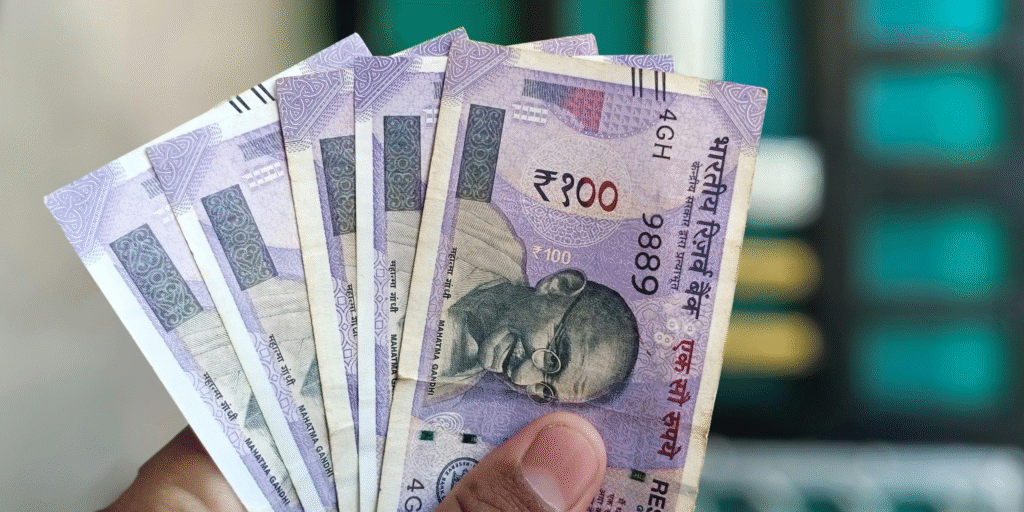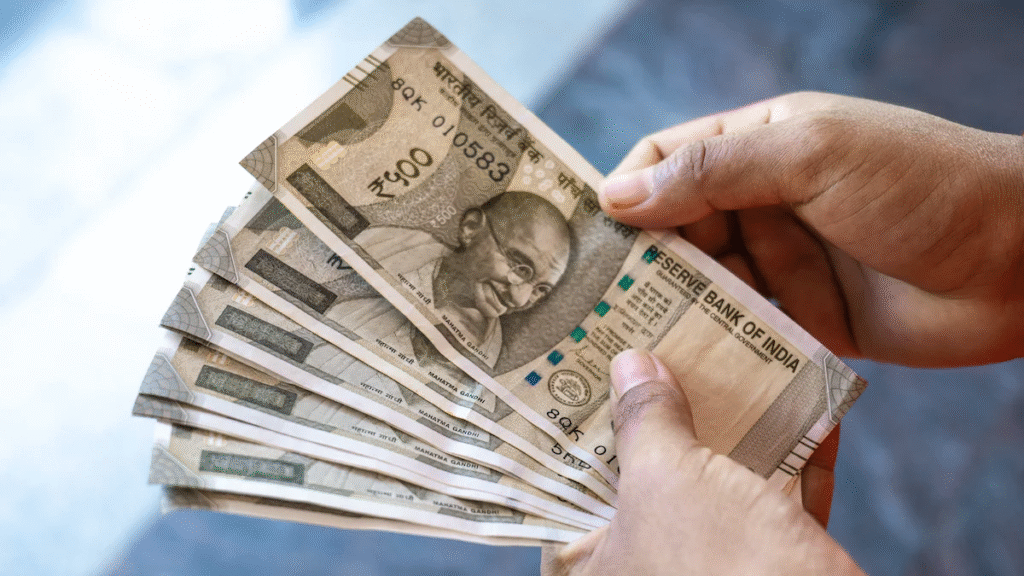Indian rupee opens weaker amid U.S.–India tariff tensions. Discover why INR dipped toward ₹87.85, what RBI did, what it means, and how to protect yourself.

Ever checked your travel app or the RBI rate and thought, “Why is ₹1 suddenly costing me more?” Today’s blog dives into the Indian rupee’s fragility, especially as it flirts with a new all‑time low. Whether you’re a student sending money home, a smartphone importer, or a freelance writer quoting USD rates—understanding what drives the rupee matters. From trade tensions between the U.S. and India to central bank game plays, this post unpacks the story with clarity, geek-level detail, and relatable examples.
Indian rupee opens weaker
Why Did the Indian Rupee Open Weaker This Week?
Key factors pushing INR toward record lows
According to Reuters, on August 5, 2025, the rupee opened at ₹87.85/$, down from ₹87.6550 on August 4, under pressure from renewed U.S. tariff threats. Traders say the RBI intervened to prevent a breach past the ₹87.95 record low. Reuters+1
Hype or Hard Reality in Trade Tensions
Donald Trump’s announcement of potential 25% tariffs on Indian exports—especially targeting sectors like pharmaceuticals—spooked markets. The rhetoric escalated with claims that India profits by reselling Russian oil. Indian officials responded firmly, pledging to defend national interests. Reuters+3AP News+3Reuters+3
Portfolio Exodus and Dollar Demand
Foreign Institutional Investors (FIIs) sold nearly ₹5,900 crore of Indian equities in just two sessions, intensifying downward pressure. Oil importers added to demand for the greenback. FXStreet+1
Key Forces Driving the Rupee’s Movement
U.S.–India Trade Tensions: Why They Hurt the Rupee
Political headlines aren’t just soundbites—they translate into macro swings.
- Trump’s tariff threats triggered immediate market jitters.
- Proposed duties on sectors like pharma and engineering risk slashing India’s GDP growth by up to 40 basis points. economictimes.indiatimes.com+9Reuters+9Reuters+9
- Biden-era uncertainties compounded by broader global trade shifts meant vulnerability for rupee.
Trade tensions aren’t abstract—tariff threats spark FII exits, oil‑importer dollar demand, and direct pressure on the rupee.
RBI Intervention and Forex Swaps
Just like a traffic cop regulating wild driving, the RBI stepped in.
- When offshore forwards pointed to ₹88+ at open, the RBI likely sold dollars to stabilize the rupee. en.wikipedia.org+15Reuters+15economictimes.indiatimes.com+15
- What’s more: a $5 billion RBI forex swap, maturing August 4, may drain liquidity (~₹43,000 crore) and affect banks’ capacity to cushion blows. economictimes.indiatimes.com
Central bank intervention can stop panic slippage—but tools like swap maturity also limit firepower.
FIIs, Importers, and Exporters—The Market Trio

Supply–demand in currency markets is shaped by these three groups:
- FIIs: When they exit stocks, they convert rupees to dollars and remove capital.
- Importers: Buy dollars to pay for oil, raw materials.
- Exporters: Hedge receivables by selling dollars, offering slight support—sometimes enough to cap losses. economictimes.indiatimes.combusiness-standard.com
While exporters help mildly, dominant demand from FIIs and importers often drives rupee weakness.
Global Dollar Climate, Fed Policy, and Technicals
International cues matter—especially when domestic is under stress.
- A weaker U.S. dollar generally helps, but not if risk aversion reigns.
- Fed rate cut expectations can soften the dollar; but if markets expect delays, dollar strengthens. economictimes.indiatimes.commoney.usnews.com
- Technically, USD/INR momentum is strong: the 20‑day EMA around 86.70 acts as support, while the 88.15 mark looms as a barrier. FXStreet+1
When risk aversion spikes, even a weaker dollar can’t buoy a stressed rupee—momentum indicators favor further slide.
What You Should Remember
- Tariff threats aren’t just political—they ripple into trade, investment, and retail prices.
- RBI intervention can temporarily cap damage—but systemic forces may overwhelm liquidity buffers.
- Capital flows dominate: FIIs leaving markets versus exporters hedging and importers demanding dollars.
- Macro cues and momentum tell us whether the rupee will bounce or break.
Real-life Story: The Freelance Translator
Priya is a Chennai‑based freelancer earning in USD. When the rupee slumps from ₹85 to ₹88 per dollar:
- Her effective income drops ~3.5%.
- She delays buying a new laptop, choosing to hold rupees.
- Her clients from the U.S. hesitate as inflation chips in.
The story plays out across thousands of small freelancers—making INR swings deeply personal.
Actionable Tips: How to Protect and Plan
- Exporters: Lock export receivables via forward contracts or options to lock in rates.
- Importers: Gradually hedge forward if rupee looks weak.
- Freelancers/Remitters: Time conversions to favorable interbank windows when possible.
- Investors: Spread exposure—don’t keep all assets tied to rupee alone.
- Policy watchers: Watch RBI swaps, U.S. job data, and debt flows to anticipate volatility.
Current Outlook and Scenario Base

- Worst case: Tariffs become official, markets lose confidence → RBI intervenes but balance sheet strains → rupee dips past ₹88.
- Base: Tariff rhetoric stays high, India pushes back diplomatically, but FII outflows remain, rupee hovers ~₹87.5‑87.9.
- Upside: Trade talks yield softening measures, foreign inflows resume → exporters hedge, momentum reverses → rupee rallies toward low‑86s. business-standard.com+1
Conclusion & CTA
The Indian rupee’s recent weakness reflects more than market whim—it embodies trade disputes, capital swings, and central bank strategy. For everyday users—from an engineering student planning tuition abroad to a small importer—the ripple effects are tangible. If you’re watching your rupee‑dollar ratio feel every headline, you aren’t alone—and you aren’t powerless.What do you think? Have you or someone you know felt the impact of rupee volatility recently? Share your experience or tips below.

How can exporters limit forex risk?
Use forward contracts or options to lock in rates and avoid sudden rupee dents.
Did RBI really intervene on August 5, 2025?
Yes — traders report RBI action prevented rupee breaching ₹87.95.
Will tariffs spell long-term rupee weakness?
If tensions persist and capital flows stay out, rupee could stay under pressure near ₹88.
What does a non‑deliverable forward mean?
It’s a bet on future spot rates settled in USD without actual delivery of rupees.
What does a non‑deliverable forward mean?
It’s a bet on future spot rates settled in USD without actual delivery of rupees.